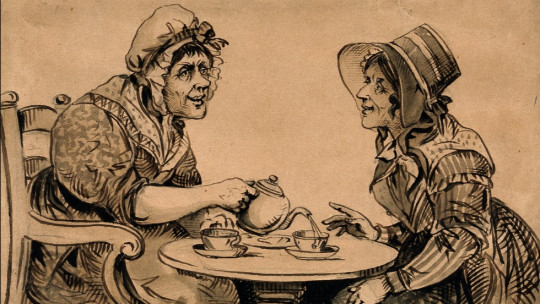
Have you ever heard of the Dunbar number? This is the number proposed by the psychologist, anthropologist and biologist Robin Dunbar to refer to the number of people with whom we usually interact.
What are its origins and what relationship does it have with our ancestors, and with primates? And with the cerebral neocortex? In this article we will answer all these questions and, in addition, we will explain what relationship the Dunbar number has with religious congregations, according to data from a recent study.
What is Dunbar number?
The Dunbar number is a number that was made known, more than 25 years ago, by the British psychologist, anthropologist and biologist Robin Dunbar (full name Robin Ian MacDonald Dunbar). It consists of the number of people with whom we usually interact, which is approximately 150
According to Dunbar, this number is related to the size of our cerebral neocortex and its processing capacity. Let us remember that the cerebral neocortex (or neocortex) is the area of the brain that allows us to reason and think logically and consciously. In other words, it collects our higher mental functions, and allows the functioning of executive functions.
Social brain hypothesis
Dunbar’s number is part of the social brain hypothesis, also developed by Robin Dunbar, according to which there is a correlation between the size of the brain (specifically, the cerebral neocortex) and the number of social relationships that people can establish (although it also applies to primates, as we will see later).
It is a number that aroused a lot of curiosity in different fields and sciences, such as sociology and anthropology, but also other more “numbers” sciences, such as business administration and statistics.
Origin of this concept in the work of Robin Dunbar
What is the origin of the Dunbar number? Many years ago, primatologists (that is, professionals who study primate behavior) observed the following: primates have a highly social nature, which means that they maintain (and need) social contact with other members. of your group.
But not only did they observe this, they also found that the number of members of the group with which the primates maintained social contact was directly related to the volume of their cerebral neocortex. That is, they determined that there is an index of social group size in each primate species, which differs from one to another depending on the volume of the neocortex of each of them
A few years later, in 1992, Robin Dunbar used the correlation that had been determined in non-human primates to predict what social group size would be in humans (i.e., he applied Dunbar’s number to humans).
Specifically, Dunbar determined that the Dunbar number in humans was the size of 147.8 (which is usually rounded to 150), although Dunbar specified that this was an approximate value.
Findings in human societies
The cerebral neocortex is an area of the brain that developed about 250,000 years ago. Dunbar began to investigate different nomadic societies, tribes and villages, to find the Dunbar number of each of them
Thus, he investigated the sizes of the social groups of all these societies, and found that Dunbar’s number could be classified into three categories: 30 to 50 people, 100 to 200 and 500 to 2,500.
Regarding his findings and observations, he also warned that A group of 150 people required a very high incentive to stay together
In this sense, a conclusion that Dunbar reached is that, for a group of this size to remain united and cohesive, its members had to invest a minimum of 42% of their time socializing with the other members of the group.
Which groups reached Dunbar’s number?
Dunbar also found that only those groups or societies that were subject to great pressure to survive, or that had a very strong need (such as some nomadic tribes, subsistence villages and different military groups) could reach Dunbar’s number.
Furthermore, he found that These people were almost always in physical contact (or at least close to each other) In contrast, dispersed groups (members of which I was not physically close) had fewer ties, fewer ties.
The importance of language
Dunbar not only studied the importance of socialization and needs in explaining Dunbar’s number, but also the importance and power of language. According to him, this could have emerged as a tool to facilitate socializations This, in turn, could improve cooperation, production, survival…
Thus, language constitutes a tool of cohesion in societies that, in turn, reduces the need to be in intimate contact with others, on a physical and social level.
Relationship with religious communities
A recent article (2020) by Bretherton and Dunbar relates Dunbar’s number to religion; specifically, with church growth literature. Thus, this study reveals that Dunbar’s number could also be applied to the size and growth of religious communities
The study goes a little further, and also analyzes other aspects surrounding Dunbar’s famous number; Specifically, the researchers made the following findings or conclusions:
Highlighted conclusions
On the one hand, they found that Larger congregations have less active participation by each of their members On the other hand, and this has a lot to do with Dunbar’s number, congregations that have only one leader usually have a number of participants that is around 150.
Furthermore, these types of congregations (with 150 members) are stratified into even smaller functional or social groups.
But what about congregations with more than 150 members? The researchers revealed that they suffer from great internal tensions that lead them to have to reorganize internally These same congregations (of more than 150 members), in fact, need structural subdivisions for the active participation of their members to occur.
The article, very interesting to read, basically provides a theoretical framework that unifies observations from the literature on church growth, along with the Social Brain Hypothesis and Dunbar’s number.








